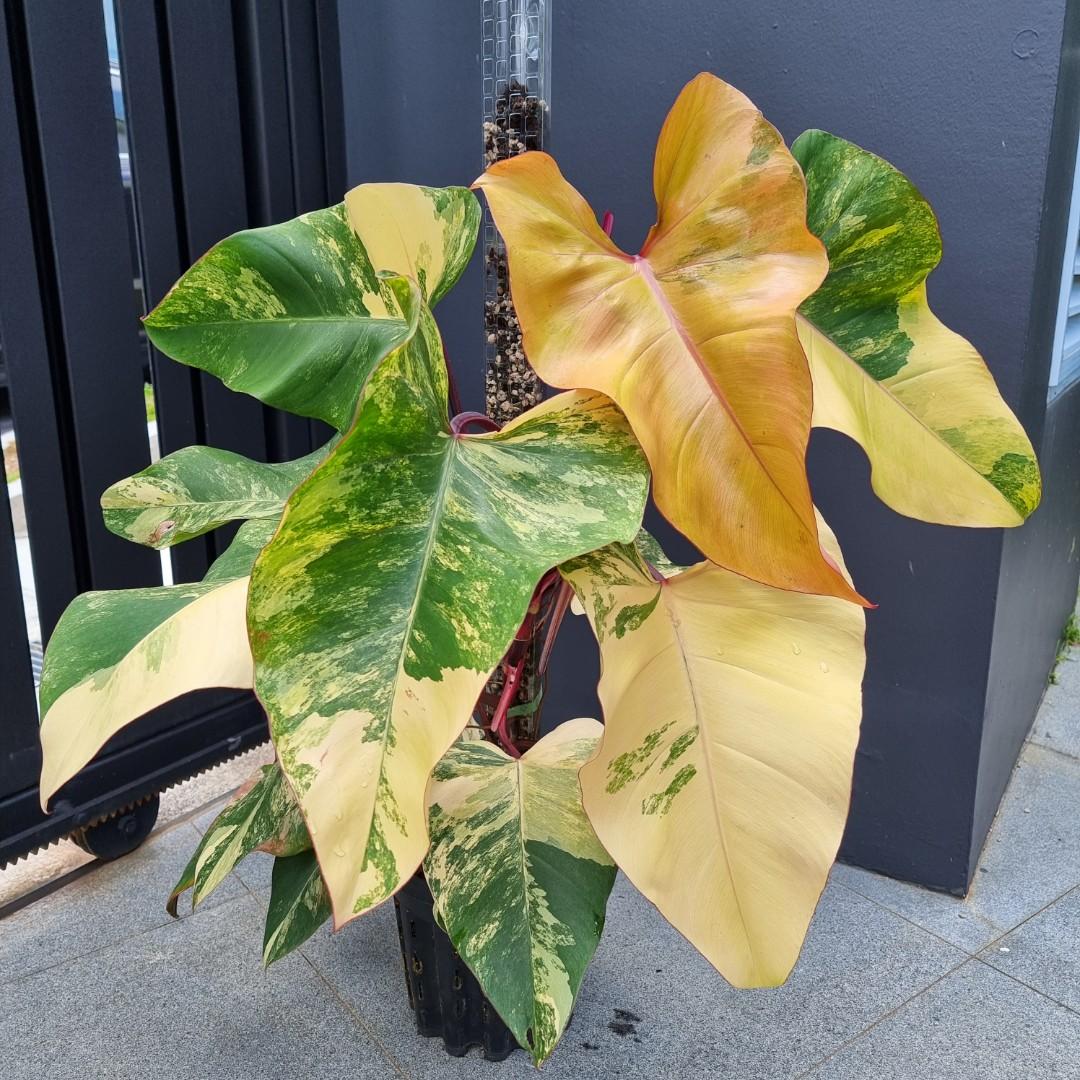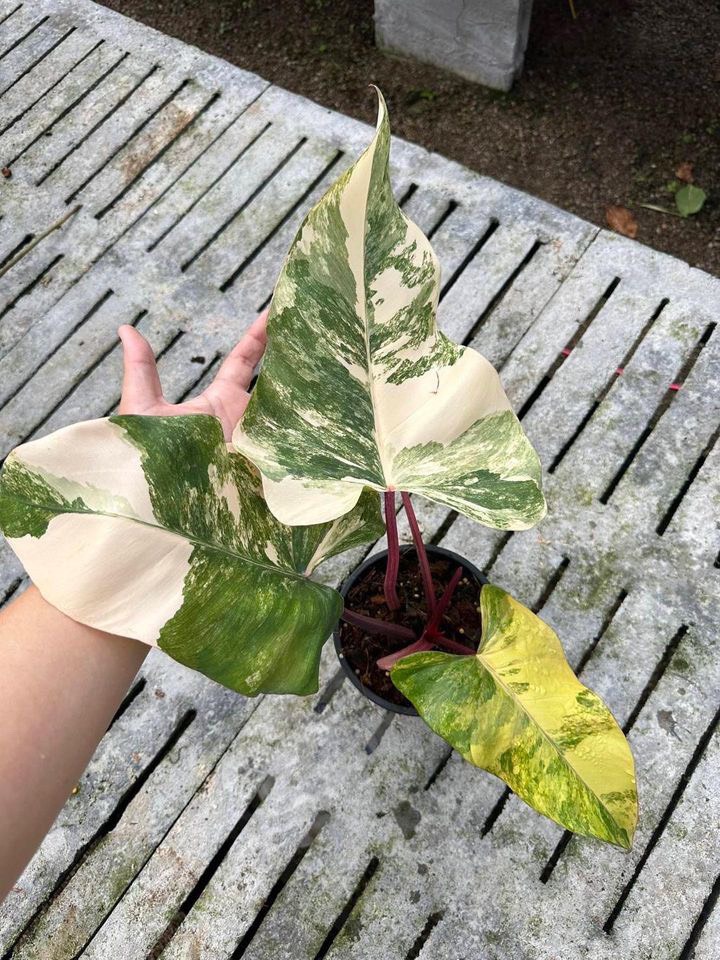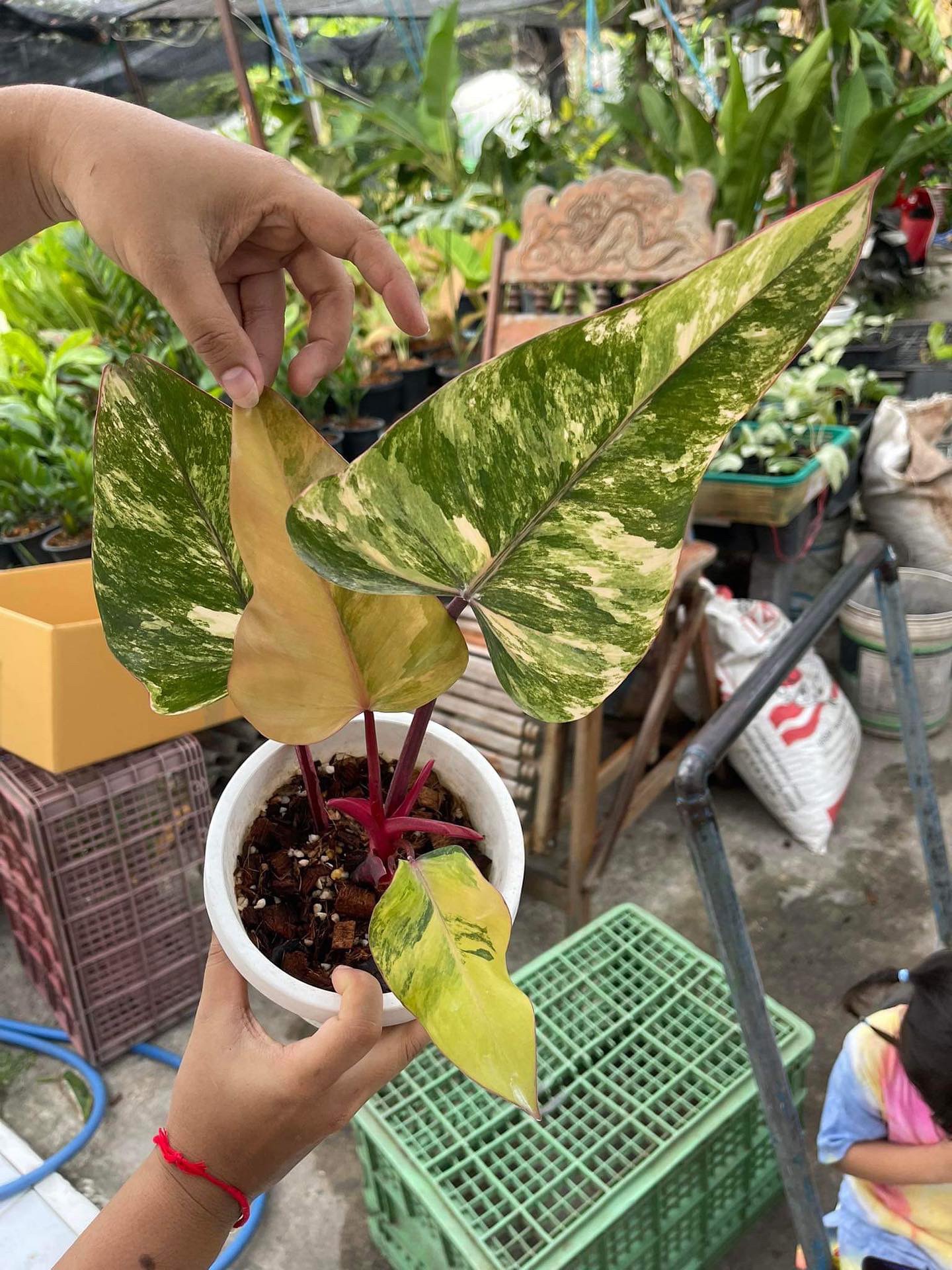Master the Care of Philodendron Strawberry Shake Variegated

Philodendron Strawberry Shake
The philodendron strawberry shake is a relatively new and exciting hybrid philodendron. This tropical houseplant is gaining popularity among indoor plant enthusiasts for its unique foliage and growth habit. In this article, we will explore everything you need to know about growing philodendron strawberry shake.
Overview
The philodendron strawberry shake is a hybrid between two vining philodendron species - philodendron erubescens and philodendron 'Prince of Orange'. It was created by crossing philodendron erubescens, which has dark green leaves, with the philodendron Prince of Orange cultivar that has variegated foliage. The resulting hybrid displays the best qualities of both parents, with its large, ruffled leaves that emerge a stunning pinkish-red color before darkening to green as they mature.
This hybrid houseplant has an upward-climbing growth pattern when given proper support. Its lush foliage cascades beautifully in hanging baskets. The leaves are deeply lobed, with each lobe ending in a narrow point. The leaves can grow up to 12 inches long on trailing stems. When new leaves emerge, they are a unique pinkish-red color with bright red stems. This eye-catching coloration eventually fades to olive-green as the leaves mature.

Growing Conditions
Philodendron strawberry shake thrives in bright, indirect light indoors. It can tolerate some early morning or late afternoon sun, but direct sunlight will burn the leaves. The ideal daytime temperature range is between 70-85°F. Nighttime temps of 60-75°F are preferable. This tropical plant enjoys average to high humidity levels. Allow the top inch or two of soil to dry out between waterings. Water thoroughly until it runs through the drainage holes, then dump out any excess water in the saucer.
Soil
Use a well-draining potting mix for philodendrons. A peat-based soil amended with perlite or pumice to improve drainage works great. The soil should be able to hold some moisture but drain well so the roots don't get waterlogged.
Pot
Philodendron strawberry shake has a vining growth habit and appreciates room to spread out its foliage. Select a pot that is wider than it is tall. Shallow planters around 6-8 inches deep work well. Make sure the container has drainage holes. Terra cotta pots are an excellent choice as they help absorb excess moisture from the soil. Go up just one size larger when it's time to repot to avoid overpotting.
Fertilizer
During the growing season from spring through fall, feed philodendron strawberry shake monthly with a balanced liquid houseplant fertilizer diluted to half strength. Avoid overfertilizing, as this can cause leaf burn. Reduce fertilizer applications in winter when growth naturally slows down.
Water
Water thoroughly when the top inch of soil becomes dry, taking care not to oversaturate the soil. Allow excess water to drain fully from the pot's bottom drainage holes after watering. Droopy, wrinkled leaves are a sign of underwatering. Brown crispy leaf edges may indicate overwatering. Adjust watering frequency and volume accordingly.
Humidity
Philodendron strawberry shake thrives in average home humidity but appreciates a boost in moisture levels. Use a humidifier or pebble tray to maintain 40-50% humidity. Misting the leaves occasionally can help increase moisture, but avoid wetting the foliage so much that it remains damp for prolonged periods, as this encourages fungal diseases.
Temperature
This tropical plant grows best with daytime temps of 70-85°F and 60-75°F at night. It can tolerate brief drops to 50°F at night. Avoid drafty areas and protect it from cold exposure below 50°F.

"Add a splash of vibrant color to your indoor garden with the Philodendron Strawberry Shake. Order now and bring this unique and stunning houseplant into your home!"
Propagation
There are a few different ways to propagate philodendron strawberry shake:
Stem Cuttings
Take 4-6 inch stem cuttings that each have 2-3 leaves. Remove the bottom leaves and place the cut end in water or moist potting mix. New roots will sprout in a few weeks. Plant the rooted cuttings in soil.
Air Layering
Select a healthy stem and make a shallow 2 inch cut. Wrap the cut area with damp sphagnum moss. Cover the moss with plastic wrap and secure it. When roots form through the moss in about 4-8 weeks, cut below the root ball and plant.
Division
Carefully divide the plant at the root ball, ensuring each division has 3-5 leaves and plenty of healthy roots. Replant the divisions in pots using fresh potting mix.

Common Problems
Philodendron strawberry shake is generally easy to care for, but may encounter a few issues:
Leaf Spotting
Small black or brown spots on the leaves are usually caused by bacterial or fungal disease. Avoid wetting the foliage, provide good air circulation, and water at the base of the plant.
Leaf Curling
Curled leaves can be caused by overwatering, low humidity, or cold drafts. Check soil moisture and water only when the top inches are dry. Increase humidity and move plant away from drafty areas.
Leaf Yellowing
Yellow leaves may indicate overwatering or lack of nutrients. Allow soil to dry out further between waterings. Apply a balanced liquid fertilizer to nourish the plant. Remove any severely yellowed leaves.
Slow Growth
Inadequate lighting, low temperatures, or insufficient fertilizer can cause slow growth. Provide bright indirect sunlight, maintain ideal temperature range, and fertilize regularly in the growing season.
Root Rot
Root rot is caused by overwatering or poorly draining soil. Repot in fresh soil mix, space out waterings, and be sure pot has drainage.Trim off rotten roots before repotting.
FAQs
Is philodendron strawberry shake rare?
Yes, philodendron strawberry shake is still quite rare and hard to find. As a newer hybrid, it is not yet widely available. It may take some searching to find this plant at specialty nurseries or online shops. The unique foliage makes it desirable for collectors.
How big does philodendron strawberry shake get?
With proper care and supported climbing, philodendron strawberry shake can grow up to 3-4 feet long in ideal conditions. The leaves reach around 12 inches in length. It remains a manageable size for most indoor settings.
Does philodendron strawberry shake flower?
This hybrid philodendron is grown mainly for its ornamental foliage. It rarely flowers indoors. The flowers are insignificant spathes that may occasionally occur on mature plants. It does not need to bloom to thrive.
Is philodendron strawberry shake toxic?
Yes, like many philodendrons, this plant contains insoluble calcium oxalates that can cause skin irritation and swelling if ingested. Keep away from pets and small children to avoid accidental poisoning. Wash hands after handling.
What light does a philodendron strawberry shake need?
Philodendron strawberry shake does best in bright, indirect light. Some early morning or late afternoon sun is tolerated. Avoid direct midday sun which can scorch the leaves. Low light causes leggy, weak growth.
Conclusion
With its uniquely colored young leaves and lush cascading foliage, philodendron strawberry shake makes a stunning addition to any indoor plant collection. This tropical climber is sure to be an eye-catching centerpiece in a home or office setting. Though philodendron strawberry shake may require some searching to acquire, its beauty and manageable size make it well worth the effort for enthusiasts of rare indoor plants. Following the proper care guidelines for lighting, watering, humidity and more will keep this gorgeous hybrid houseplant thriving for many years to come.
https://bit.ly/41Vg7nh
Nhận xét
Đăng nhận xét